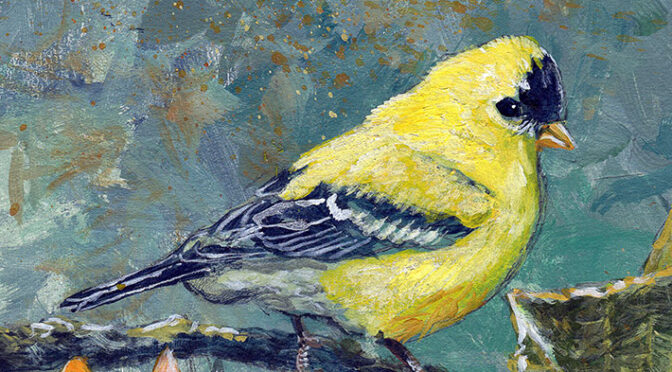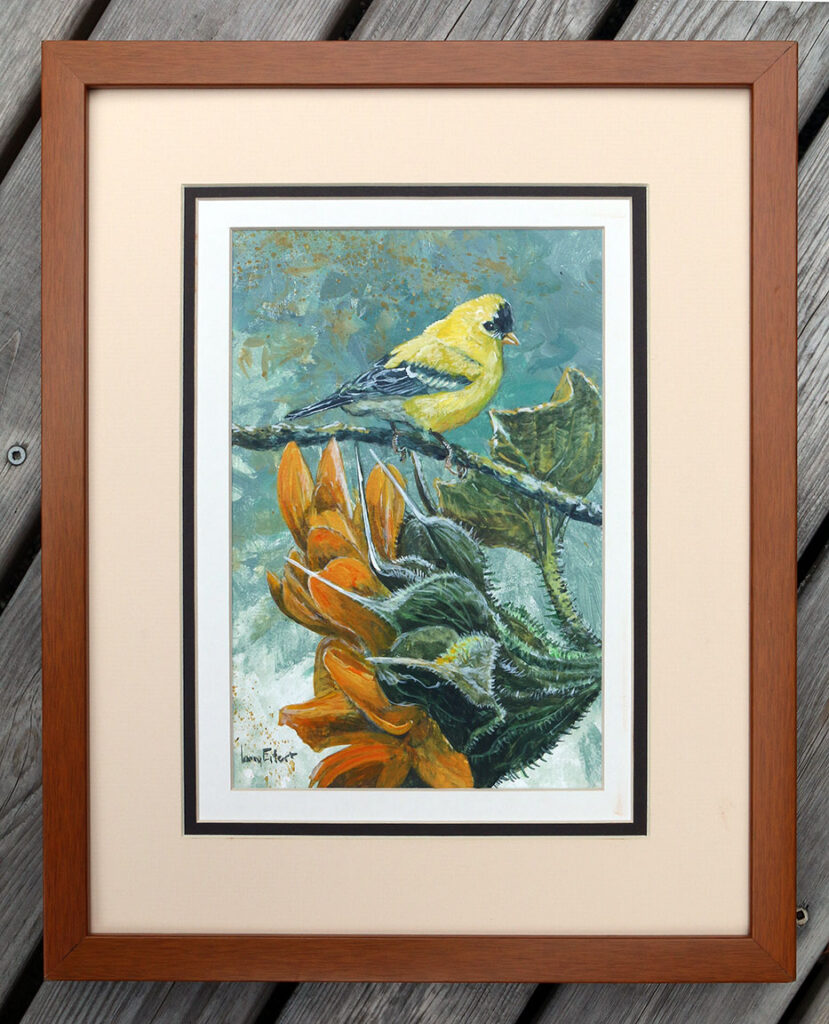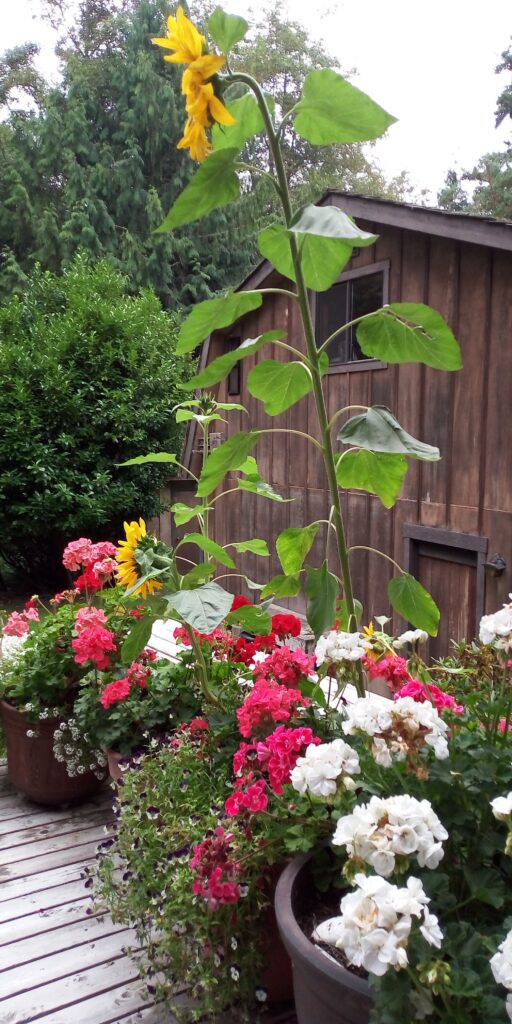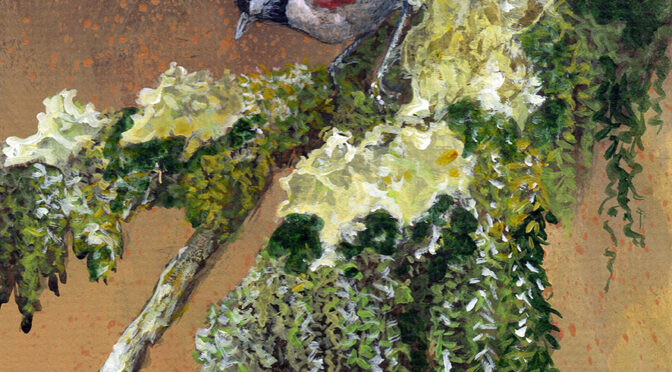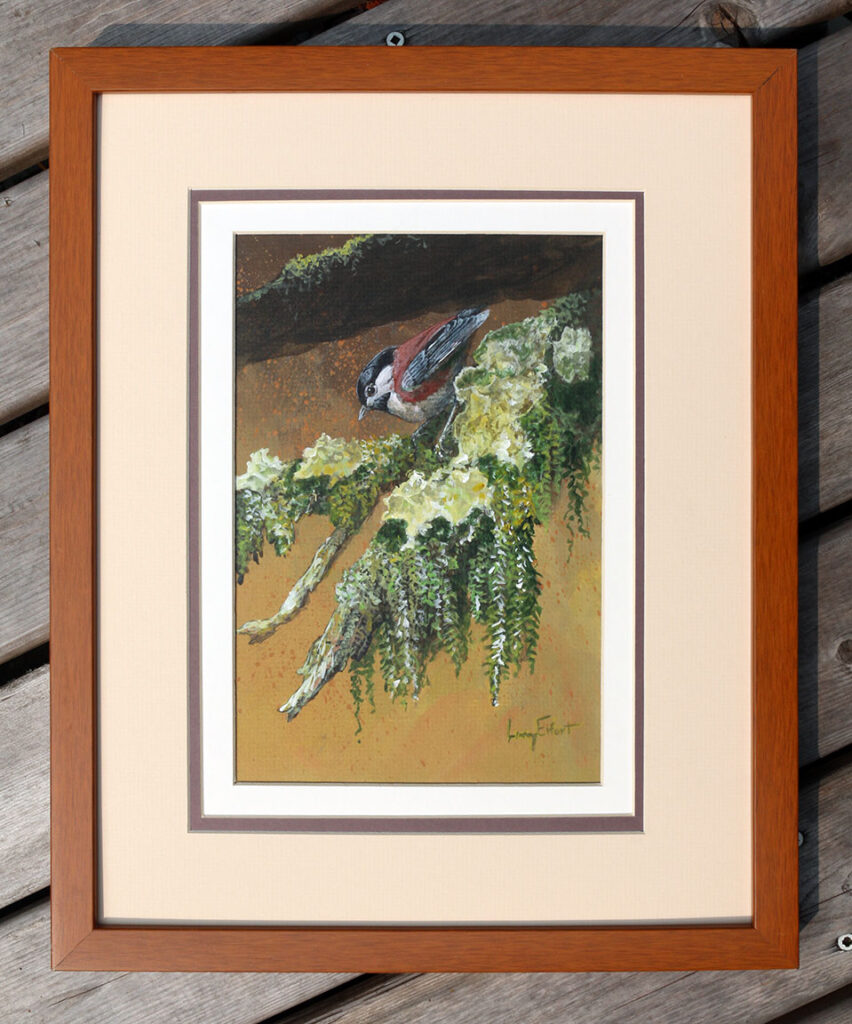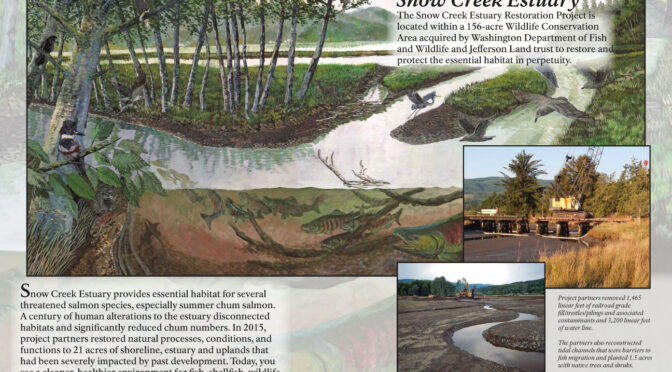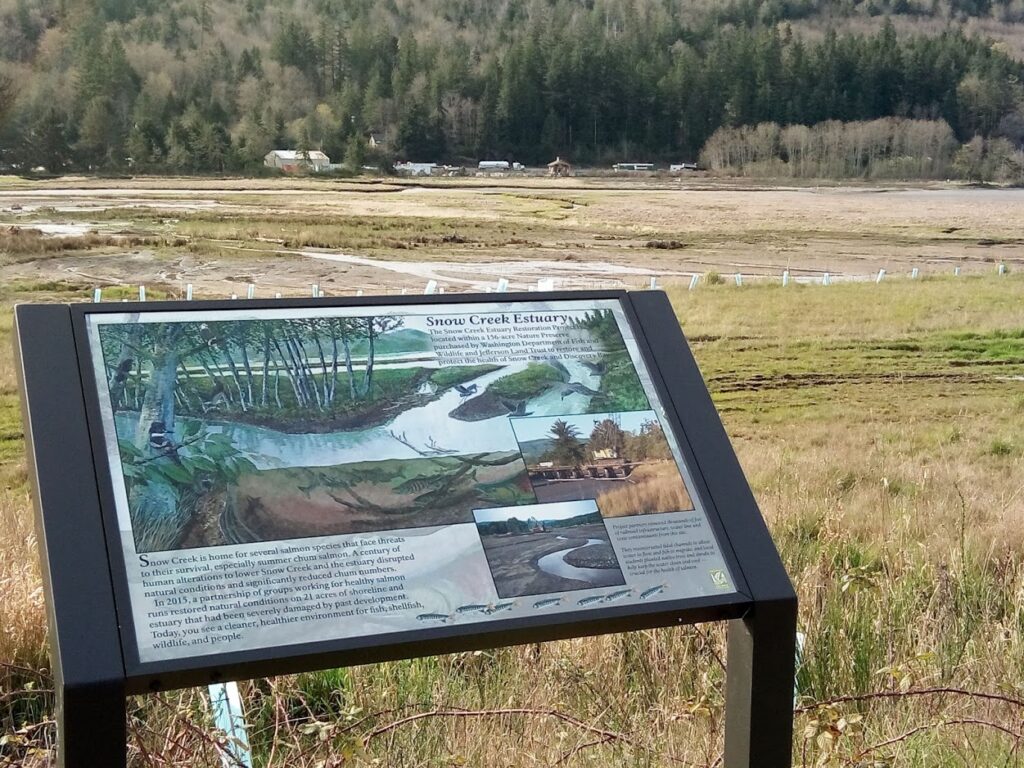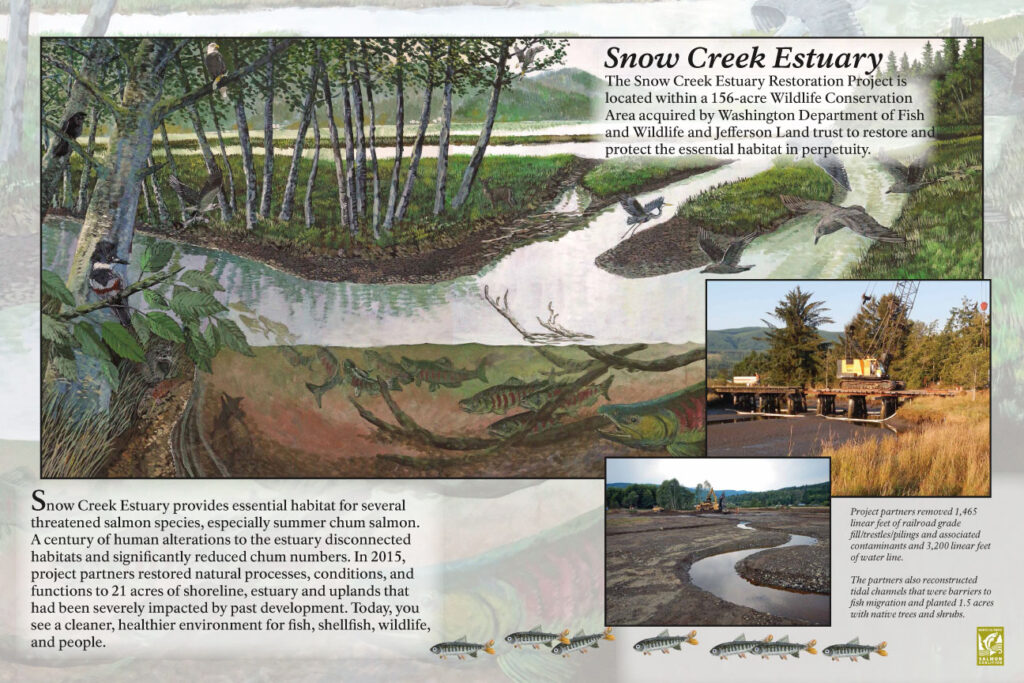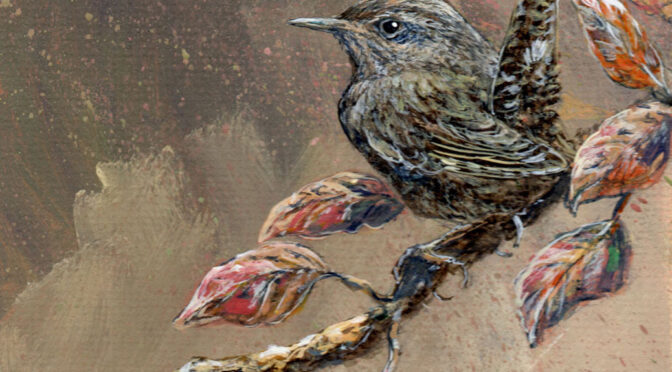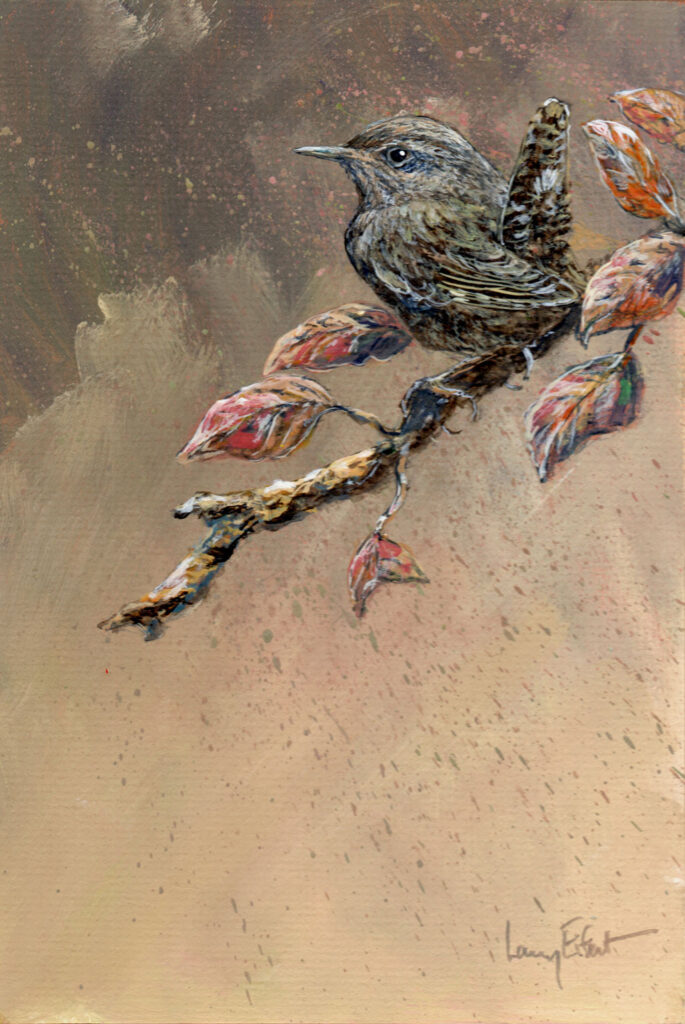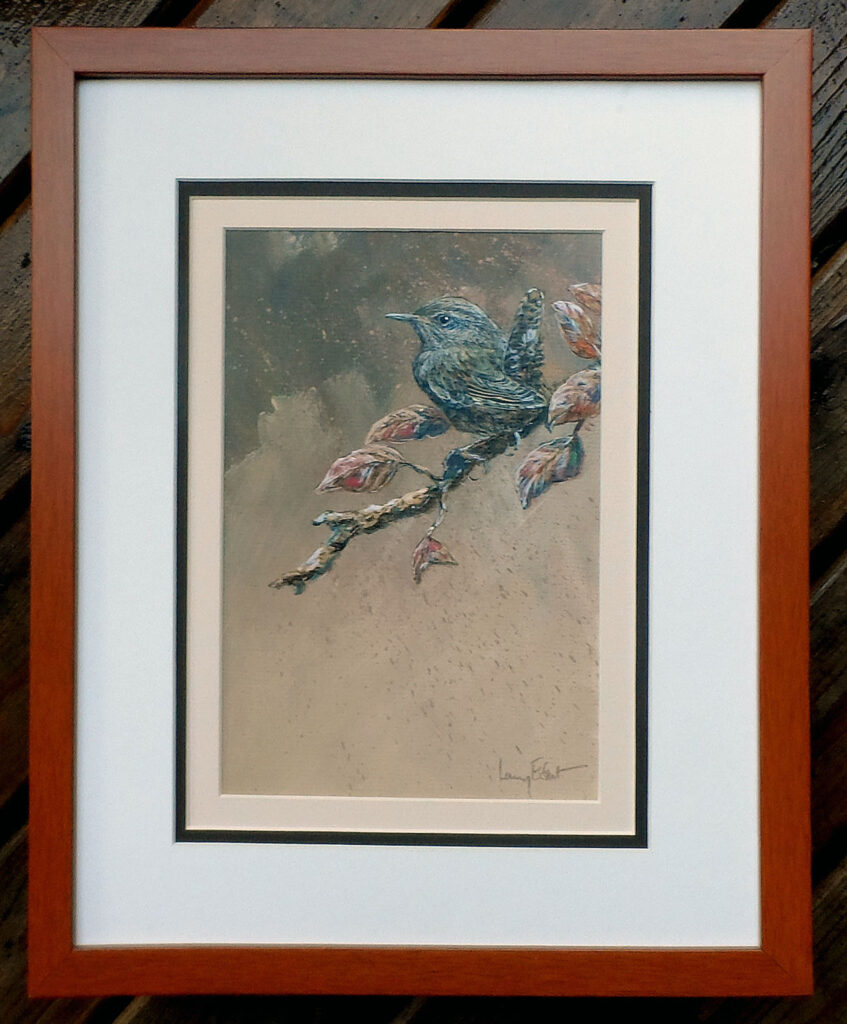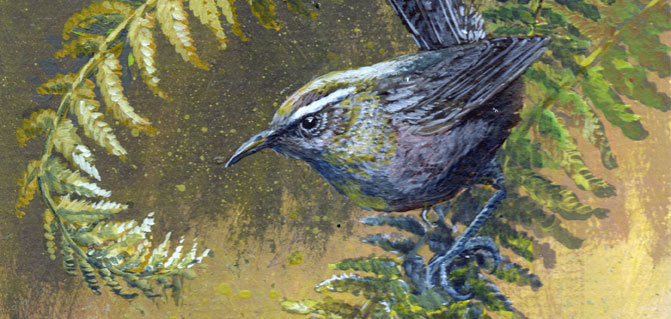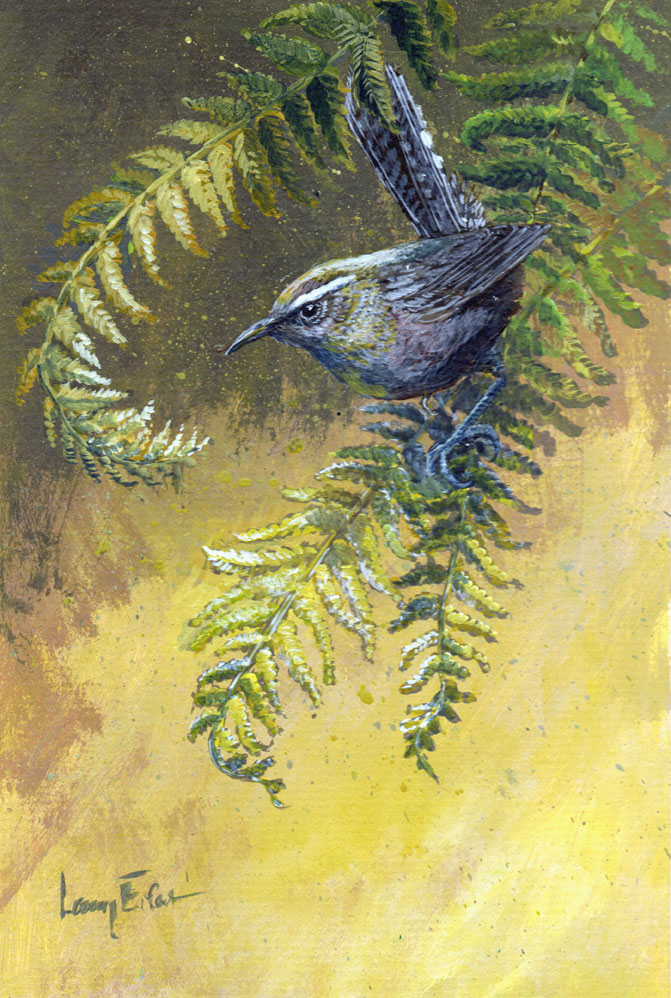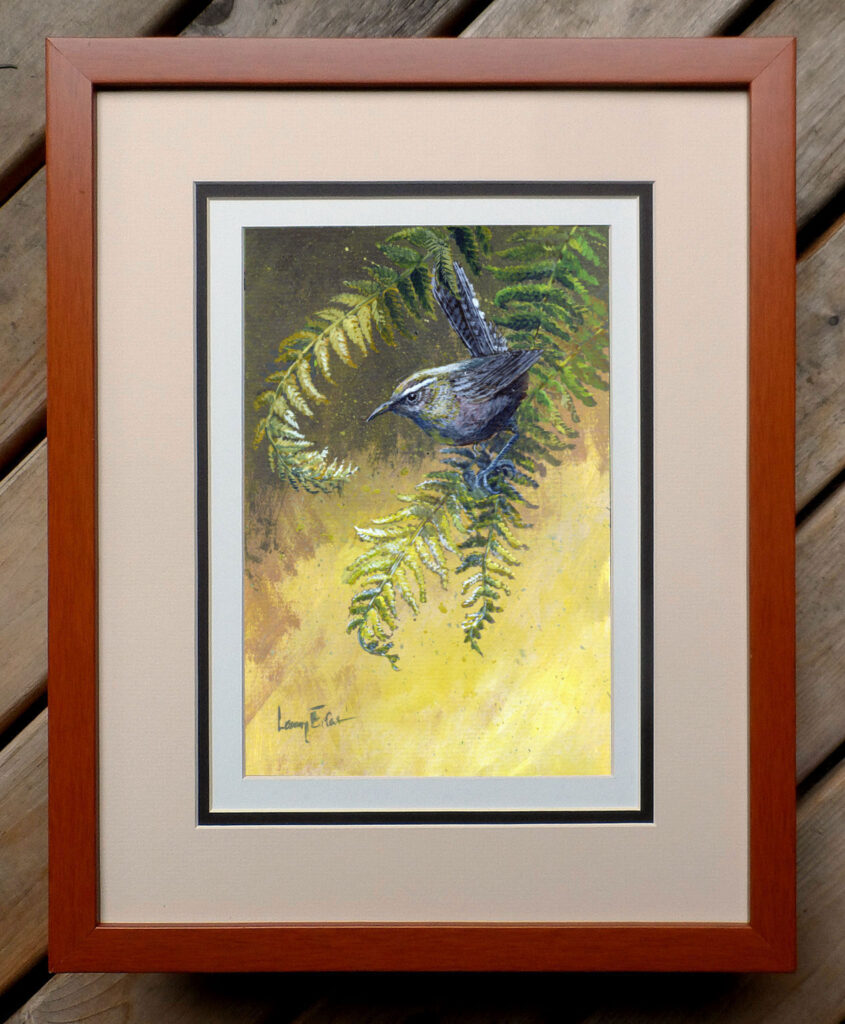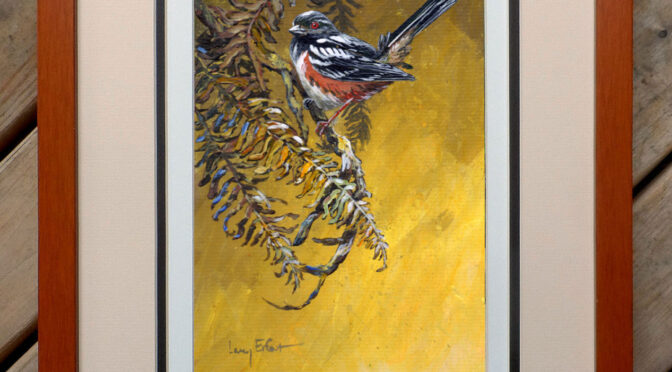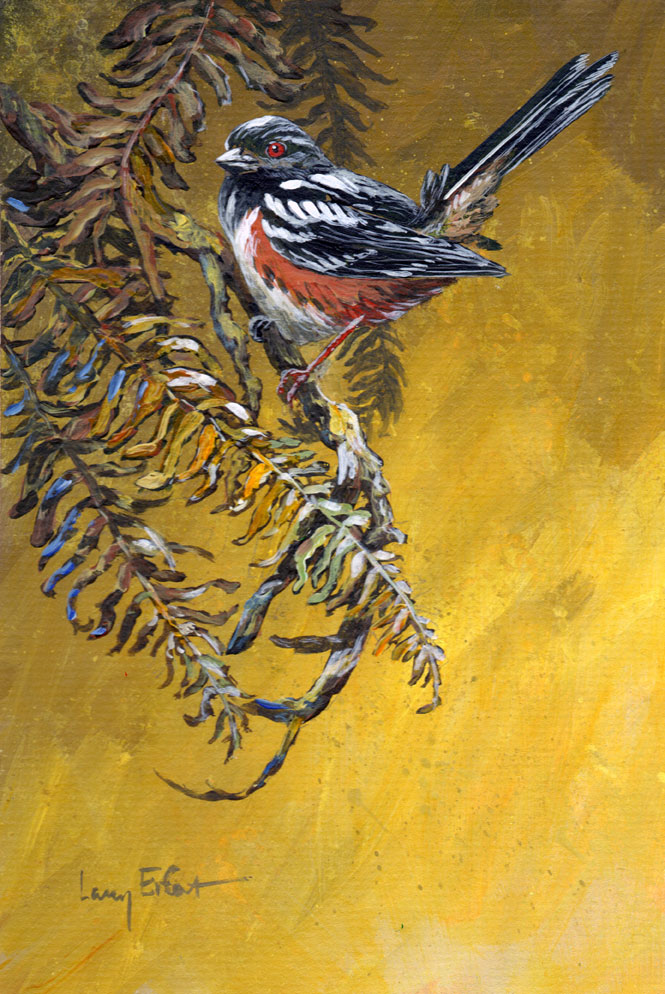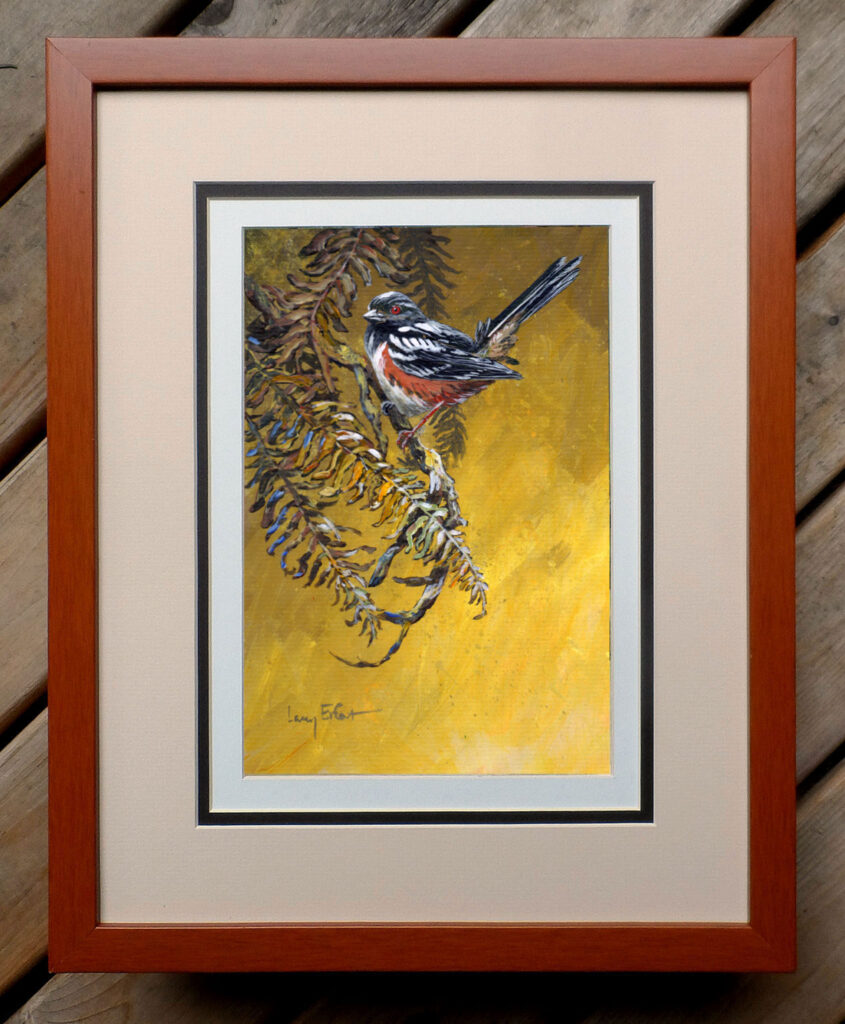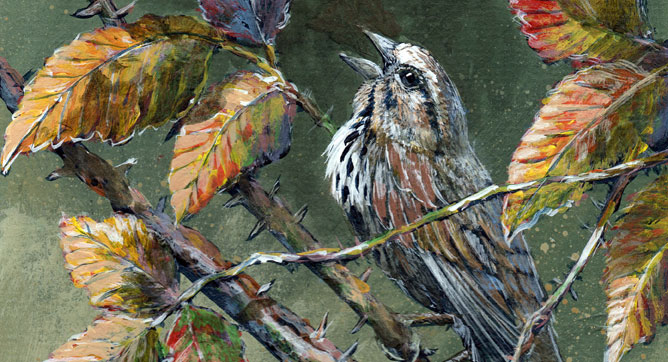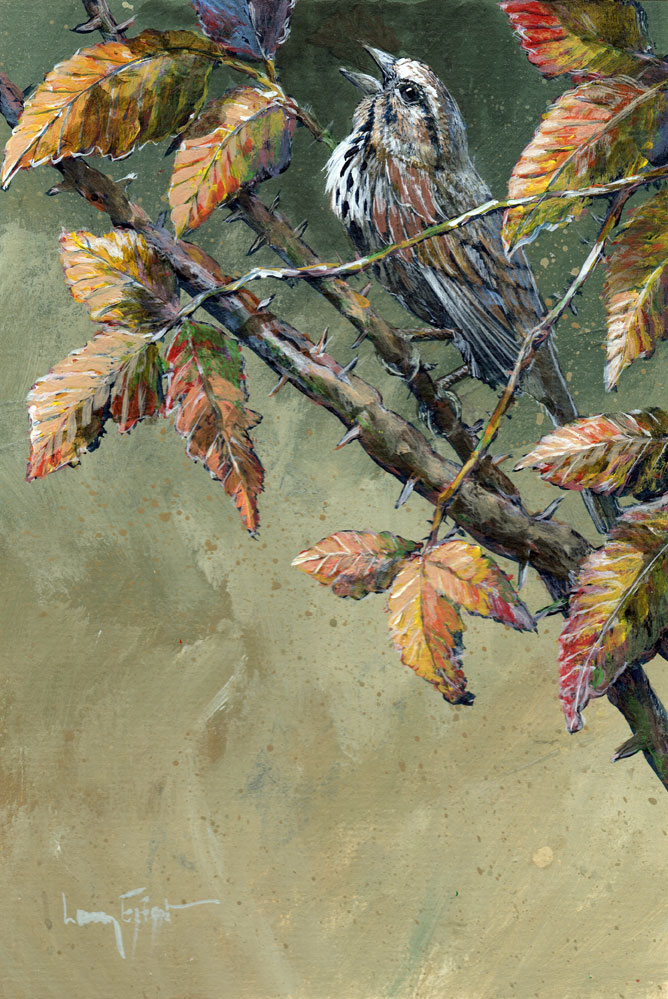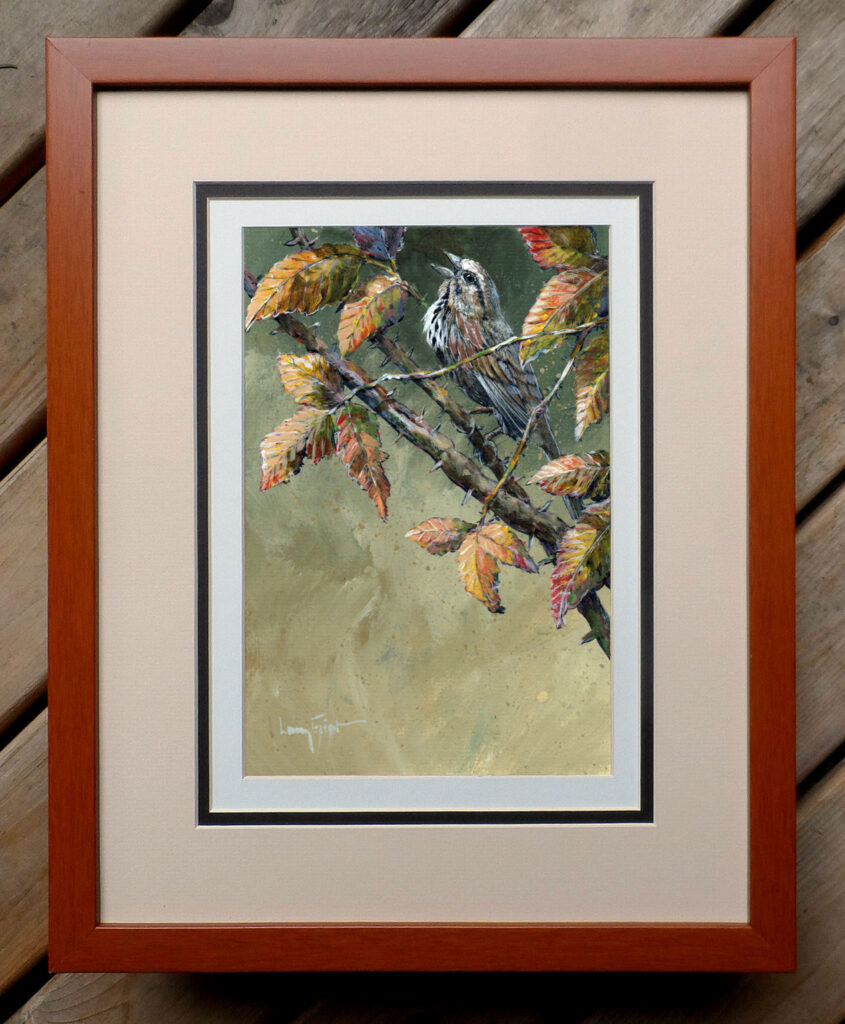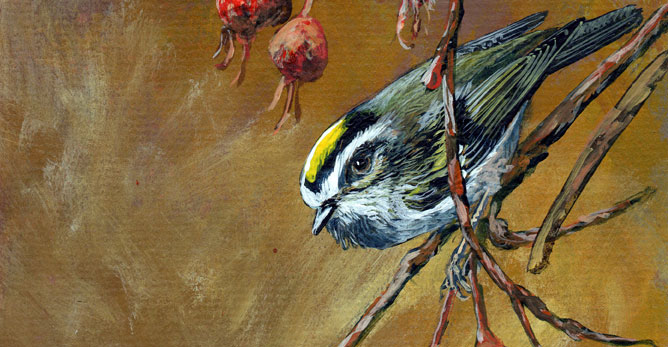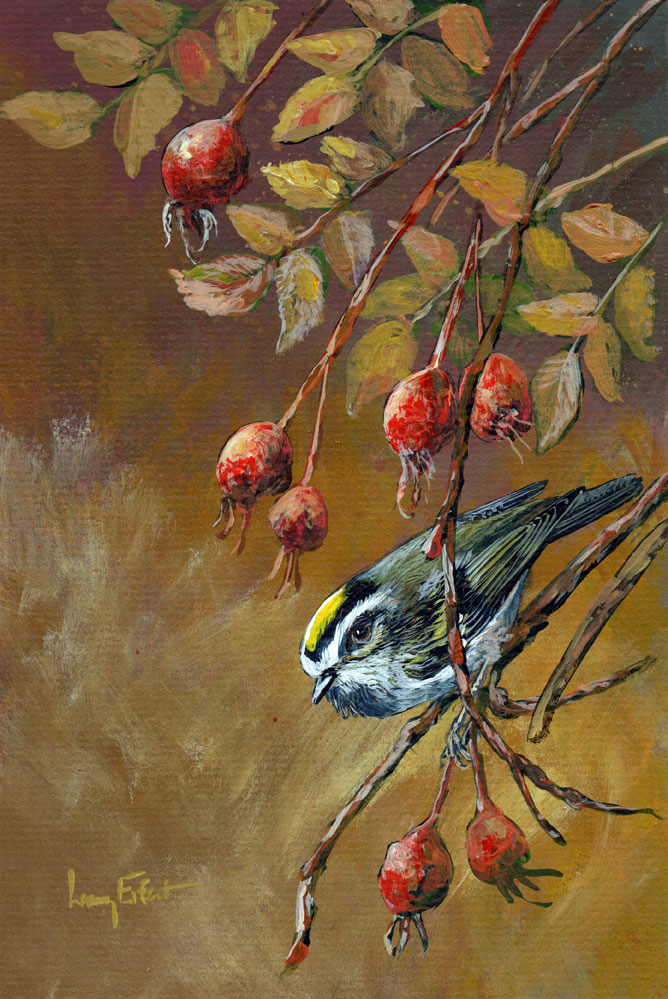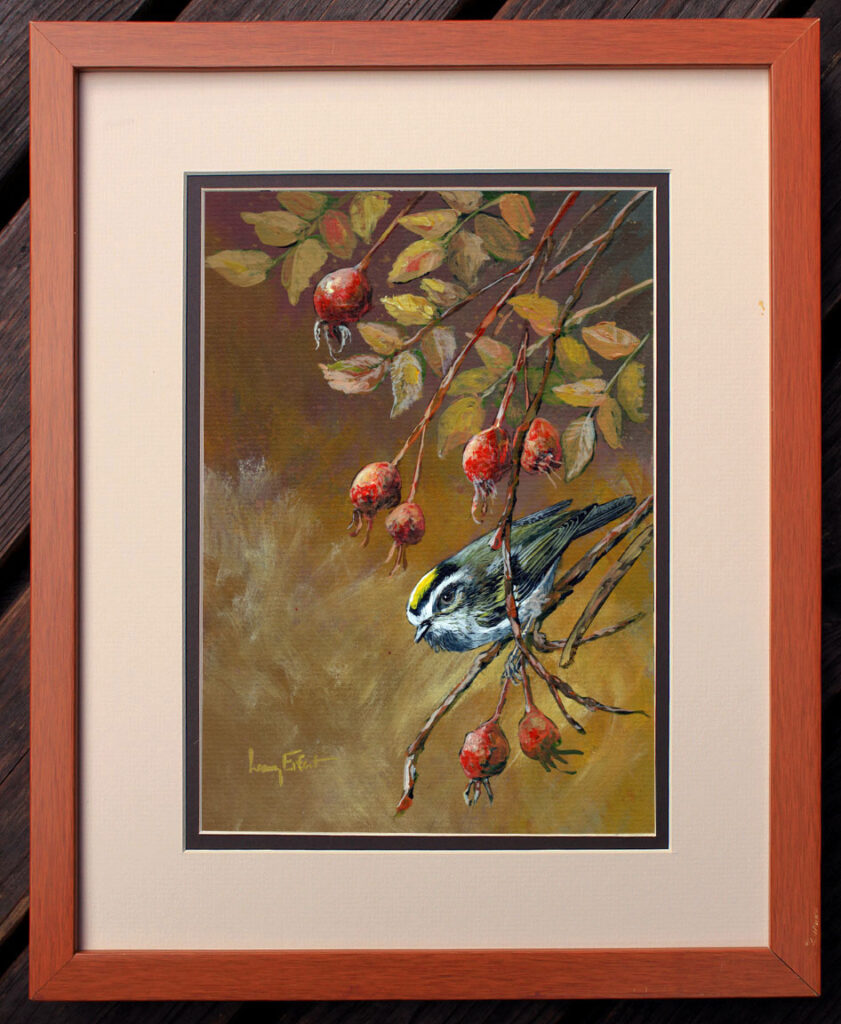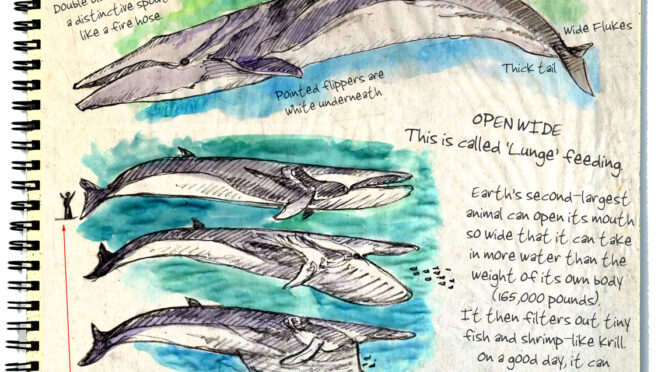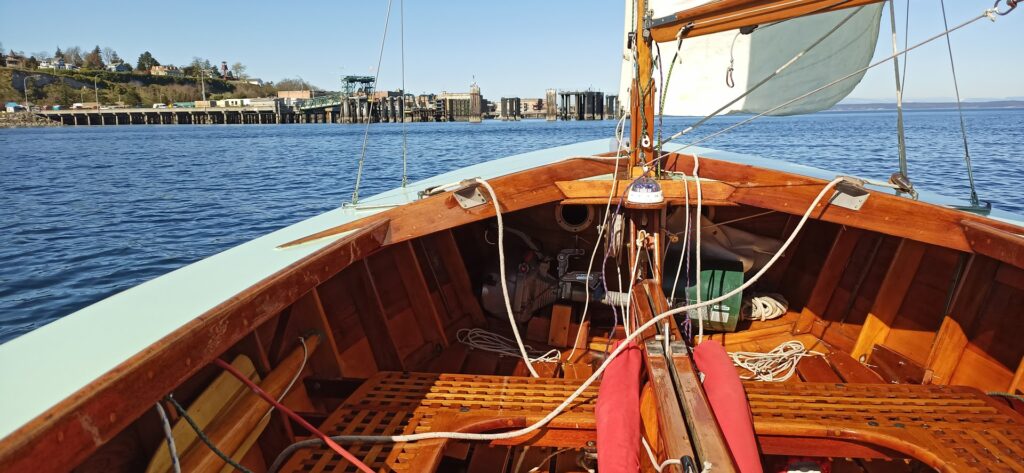{This painting is sold}
A new painting. A little story to go with it. We have American Goldfinches here in our meadow that come to the seed feeders. Red squirrels, gray squirrels and Townsend’s chipmunks are here as well. Some get a mouthful of seeds and run over to Nancy’s summer flower pots – bury them for some later meal – first-rate horders. Some seeds grow, most don’t, but of course Nancy doesn’t uproot them – every plant gets a chance around here.
Recently, a goldfinch decided to short-cut the process, forget the feeder and come straight for the giant seed-grocery. The sunflower just dwarfed the bird and smaller flowers beneath it, and I think this shows the collective and frantic growing energy of the Northwest in summer – grow fast and die, or head south. Soon, this bird will head for warmer winter digs, the sunflower will be toast, but for now, it was a painting waiting to happen.
This painting is in a custom pecan frame, has a triple mat and is under glass. It’s outside measurements are 12″ x 15″. If you’d like this painting, just email me at larry@larryeifert.com. It’s $195, framed and shipping is included if shipped within the U.S. Yes, freight free, usually Priority Mail!
If you’re Facebook friends with Nancy, you’ll likely notice an almost identical painting on her feed. We painted these two together on the same table – and we’re still married!
Thanks for reading my stuff this week.
Larry Eifert
Here’s the blog on the web. And here’s my Facebook fan page. I post lots of other stuff there.
Click here to go to our main website – with jigsaw puzzles, prints, interpretive portfolios and lots of other stuff.
Nancy’s web portfolio of stunning photography
And here to go to Virginia Eifert’s website. Her books are now becoming available as Amazon Kindle books.
